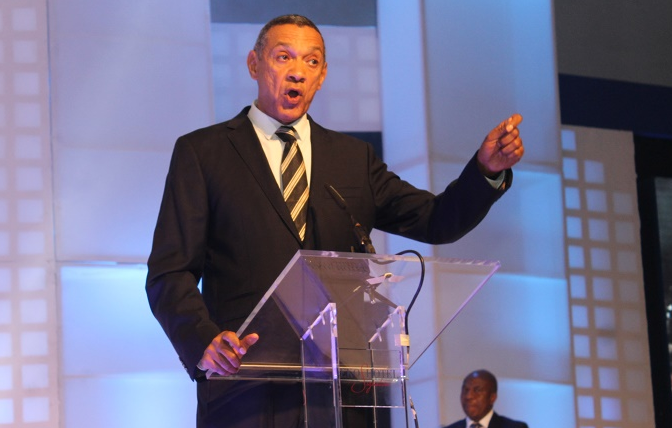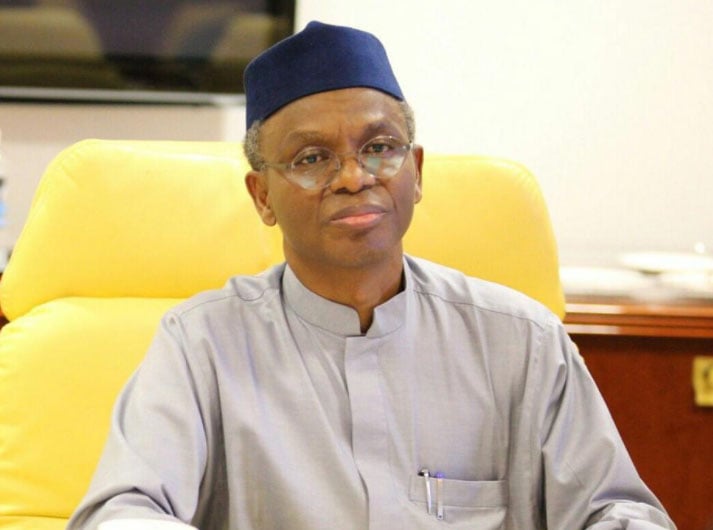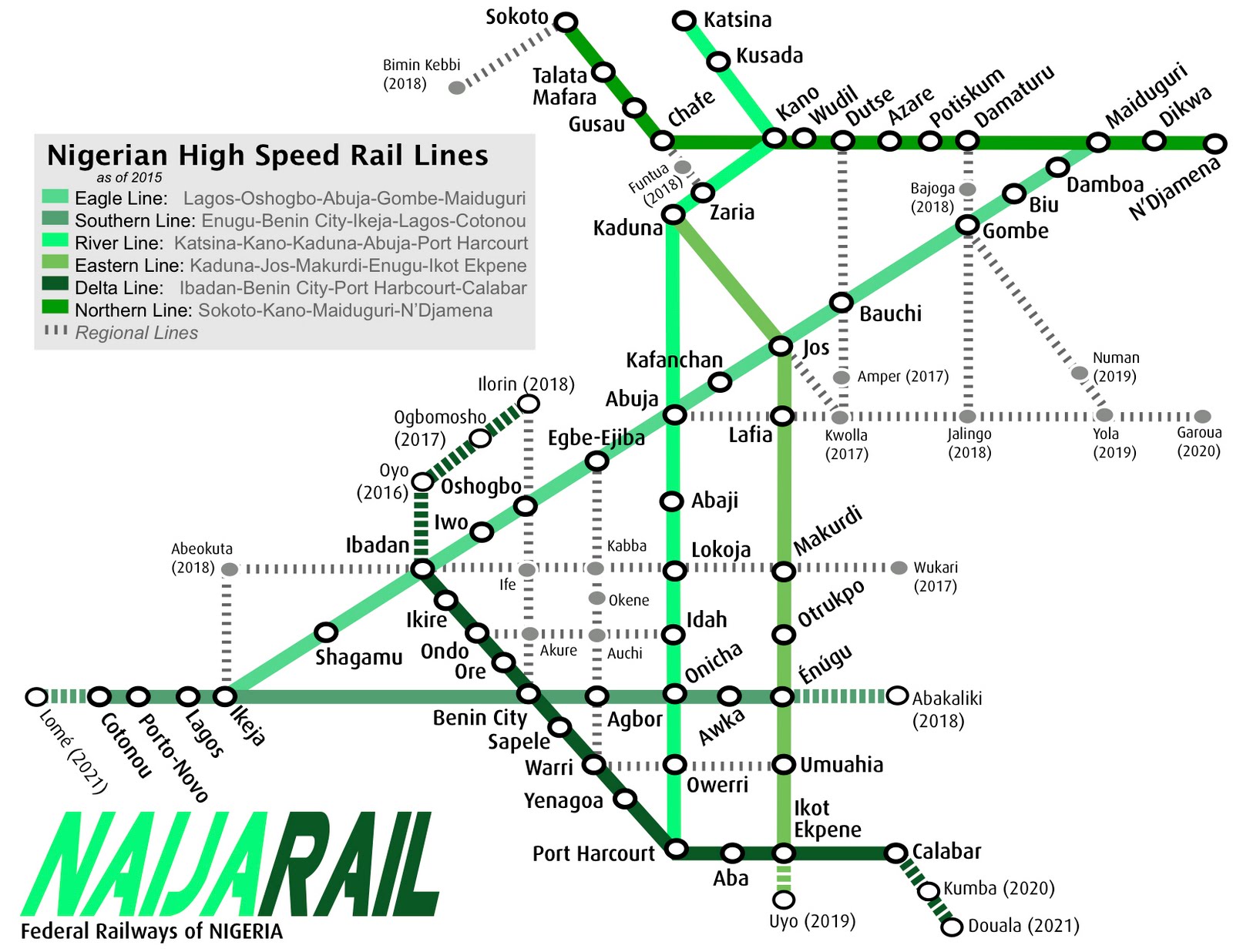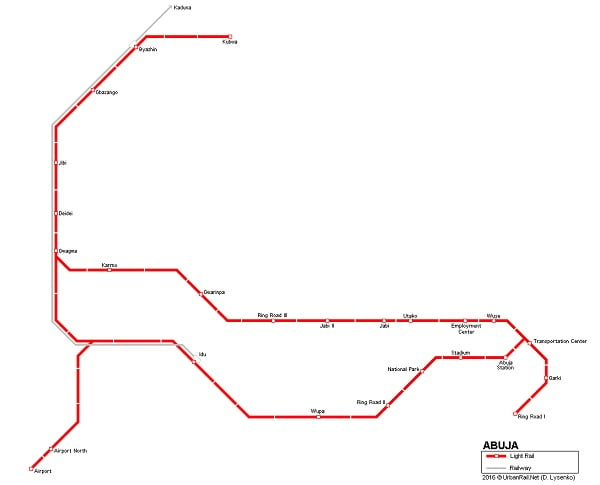
On Thursday, President Muhammadu Buhari was in Kaduna state to inaugurate new coaches and locomotives for the Abuja-Kaduna train service at Rigasa station.
The president, after the inauguration, took a train ride from Rigasa to Kakuri on the outskirts of Kaduna to inaugurate Nigeria’s first inland dry port.
Commenting via Twitter, Ben Murray Bruce, senator representing Bayelsa east, asked Buhari to thank ex-President Goodluck Jonathan for availing him the opportunity to ride on the train.
Bruce said the rail system in question was “entirely” Jonathan’s achievement.
But Nasir el-Rufai, Kaduna state governor, replied Bruce, saying the administration of former President Olusegun Obasanjo – “which Jonathan was not part of” – initiated and raised funds for the project.
But Bruce stood his ground, challenging el-Rufai to a public debate on the issue.
In August 2017, a similar controversy had risen as to who approved the rail lines from Kano to Daura and Jibia local government areas of Katsina.

Just like the Daura-Jibia, Kano-Lagos rail lines, the Abuja-Kaduna is not a new initiative. It is in a plan approved by Jonathan, which Buhari is now implementing.
So, whose project is really the Abuja-Kaduna railway system?
FACT 1: OBASANJO CONCEIVED THE PROJECT
On October 9, 2006, Obasanjo said “no nation has achieved holistic development without a coherent, integrated, efficient and reliable transportation system” while setting out his vision for the revitalisation of Nigeria’s 3500km rail network.
The grand plan is summed as the Lagos-Kano standard gauge modernisation project. The contract was awarded to China Civil Engineering and Construction Co (CCECC), for $8.3bn, to be funded with a soft loan of from China.
However, due to funding problems, it was later redesigned to be executed in standalone segments and the existing 1,124km narrow gauge Lagos-Kano line was rehabilitated.

The Abuja-Kaduna segment is the first to be implemented as part of the standard gauge project.
Obasanjo added that a new line would be built for 100km from Minna to Abuja, continuing for 205km beyond the capital to Kaduna. He also said phase II would see reconstruction of the Port Harcourt-Jos route.
The agreement with CCECC was done that month.
FACT 2: YAR’ADUA STALLED IT
However, in November 2007, the Yar’Adua administration stopped the project due to “paucity of fund”.
Diezani Alison-Madueke, then minister of transportation, announced that the programme was “posing challenges to the current administration”.
The intention to source funding from the country’s excess crude account had “constitutional limitations”, she said, and an anticipated $1.28bn loan from China “crashed for a number of reasons”.
Yar’Adua was worried that the first payments were made without appropriation and there was no engineering design in place, according to a senior official in his administration who spoke with TheCable off-record.

El-Rufai
“Yar’Adua insisted that the proper thing must be done, and even invited the respected geographer and urban planning expert, Professor Akin Mabogunje, to a meeting to discuss how the entire rail system could be modernised,” the former official said.
The Abuja-Kaduna project was then finalised in 2009. The contract for building the new line was awarded in December 2010.
Yar’Adua was in power then, even though he was battling health issues, and Jonathan was his deputy.
FACT 3: JONATHAN STARTED THE PROJECT
According to Railway Technology, the construction of the Abuja-Kaduna rail line started in February 2011 and was completed in December 2014.
Jonathan was acting president from February to May 2010 and president from May 2010 to May 2015.
The Abuja-Kaduna segment is the first to be implemented as part of the Lagos-Kano standard gauge project under the first standard gauge railway modernisation projects (SGRMP) in Nigeria.
In October 2014, the federal executive council (FEC) approved $6.6 million for the procurement of two locomotives for the Abuja- Kaduna rail.
After Jonathan assumed power upon winning the 2011 presidential election, he initiated the high-speed rail project.
In 2014, it was rated by KPMG, one of the leading consulting firms in the world, to be among the global top 100 world-class infrastructure projects.

The rail will connect Lagos, Kano, Kaduna, Warri, Bauchi, Abuja, and Port Harcourt and will cost the country $13 billion, much of which will be financed with a loan from the Export Import Bank of China.
The China Railway Construction Corporation secured the contract to build the 3,218km network, which will be digitally operated using fibre-optic cables, radio communication and wireless services.
The project is designed to cover 54 stations and will take 25 years to build.
FACT 4: BUHARI IS COMPLETING THE PROJECT
The Jonathan administration could not have lasted 25 years, given Nigeria’s 4-year term for presidency. At most, he might have won his 2015 re-election bid and would have spent nine years in power.
As government is a continuum, the project did not fade with the end of his tenure. Buhari took over and is finishing what Jonathan started.
The 187 km standard gauge line between Kaduna and Abuja was inaugurated by Buhari on July 26, 2016, with standard gauge railway tracks from Idu, near Abuja, to Kaduna in the north-western region of Nigeria.
It has ten stations and features both passenger and cargo trains.
Senate President Bukola Saraki had said the launch is “indeed an epoch-making event as it pushes Nigeria closer to achieving economic diversification by bridging the gaps in our nation’s infrastructure”.
And upon the completion of the rail line, Buhari travelled to Kaduna to inaugurate it.
The inauguration is no longer within the powers of Obasanjo and Jonathan, even though they had worked on the project before Buhari.
THE ABUJA LIGHT RAIL VS THE ABUJA-KADUNA RAIL SYSTEM
With nine intermediate stations, the Abuja-Kaduna trains run at a maximum speed of 100 km/h. At its southern end, the line terminates at Idu, about 20km from central Abuja, where there will be an interchange with the Abuja light rail, a 78km intra-city rail line.
The Abuja light rail is a different project from the Abuja-Kaduna rail line, but still part of the grand plan birthed by the Obasanjo-led administration.

While the Abuja-Kaduna rail line will connect Lagos, Kano, Kaduna, Warri, Bauchi, Abuja, and Port Harcourt, the Abuja light rain will run only within the capital city.
The first phase of the Abuja light rail project will connect the city centre to Nnamdi Azikiwe International Airport, stopping at the standard gauge railway station in Idu.
The project was 90 percent complete as of March 2017 and was supposed to be launched in December of the same year.
CONCLUSION
When the roads of three streets merge to form a crossroad, the meeting point belongs to all of the streets or none of them. Such is the case with the Abuja-Kaduna rail system.
However, Jonathan did the major part of the work and deserves a bigger chunk of the cake of acknowledgement.
If he had not pursued the project, maybe Buhari would not have had the project to complete.
(The Cable )
(The Cable )
No comments:
Post a Comment
Get more stories like this on our twitter @Abdul_Ent and facebook page @abdulkukublogspot